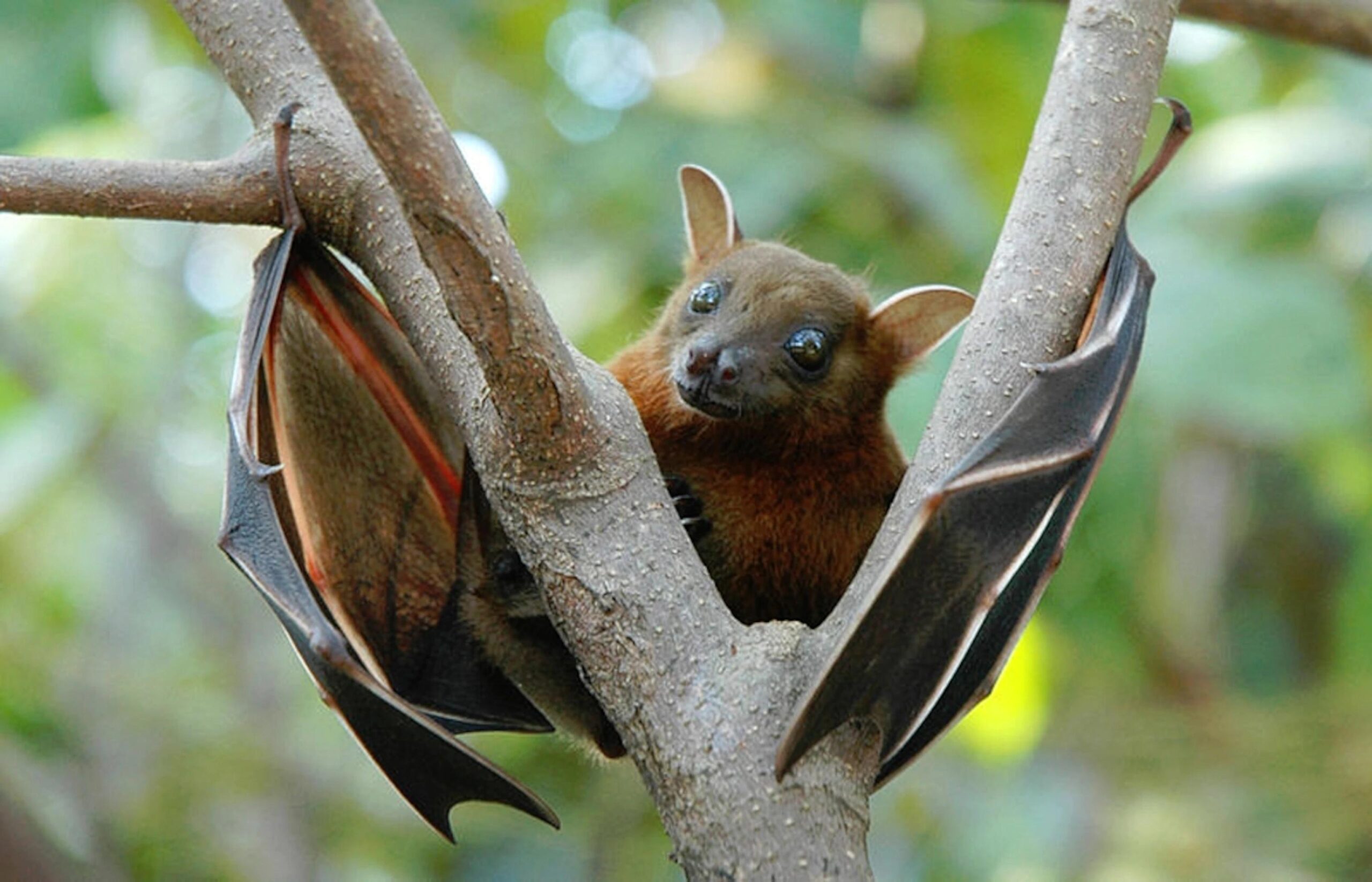Around the state of Rhode Island, bats roam the skies searching for insects to eat which may be near you as you walk around outside in the summer.
Many people think bats are scary creatures lurking around people at dusk and night, but according to Peter August, a retired professor in the Natural Resources department at URI, there are a few misconceptions about these animals.
The first misconception is that bats are getting in your hair, August said. If they are near your head, they are most likely looking for mosquitos around you to eat. For example, if you are standing outside on a hot summer night, you are most likely to attract bugs that bats eat, he said.
The second misconception is the phrase “blind as a bat.” This phrase is not true because bats aren’t blind, according to August. Sight isn’t one of their best sensory cues to navigate. Instead they primarily rely on echolocation.
“If you look at the flying foxes in Asia and Africa, they have giant fox-like eyes to fly around dusk and dawn, not just moonless nights,” August said. “So they can see just fine.”
The last misconception is that they are spooky and scary in our country, according to August. We propagate that as a bat silhouette, a common decoration for Halloween. However, other countries with bats, like China, see them as a sign of good luck.
For example Wu, means good fortune in Chinese. According to August, if you look at Chinese furniture or dinnerware, you might see the silhouette of bats printed on them.
There are benefits of bats because they are part of our native biodiversity, August said. People should respect and enjoy the native fauna here. The bats in our part of the world are all insect eaters. One big brown bat can eat up to 1000 mosquitos a night, according to August. If you live near a colony of 50 to 100 bats, they also eat eight different kinds of moths that are crop pests. This saves almost $1 billion on pest control.
Another benefit is that they are important pollinators of plants and dispersal of seeds, according to August. When he lived in Venezuela, there were a lot of fig trees. Bats would come to the fig tree when they were ripe. They would eat it, spit out the seeds and create more fruit trees.
“Without bats, there would be no margaritas in Mexican restaurants,” August said.
The Jamaican fruit bat is one of his favorite types, August said. According to him, he got to know them in Puerto Rico. Their behavior was interesting as he trapped them into silk nets. The nets are so thin, they don’t pick up well with echolocation. If he plants a fruit tree and puts a net over it, he is most likely to catch up to 1015 bats.
Another bat is carnivorous and lives in Yucatan, Mexico, according to Jason Jaacks, a journalism professor at URI. Jaacks went to the Yucatan peninsula in Mexico to film researchers working with bats. While he did not do research, he filmed the linnaeus spectral bat, which is the largest carnivorous bat on the planet.
The linnaeus spectral bat needs a lot of space in its ecosystem, according to Jaacks. While his film wasn’t about the benefits of bats, based on the researchers working with the bats, the bats showed how they play their ecological role by utilizing the habitat around them.
“I remember the exact time, like a couple days to a week to see how they were moving to the forest, and you can see some pretty interesting data,” Jaacks stated.
While bats can be beneficial, they still have rabies, so people shouldn’t handle or touch them, according to August. So be respectful with bats and next time you see one, enjoy their aerial acrobatics, he added.





